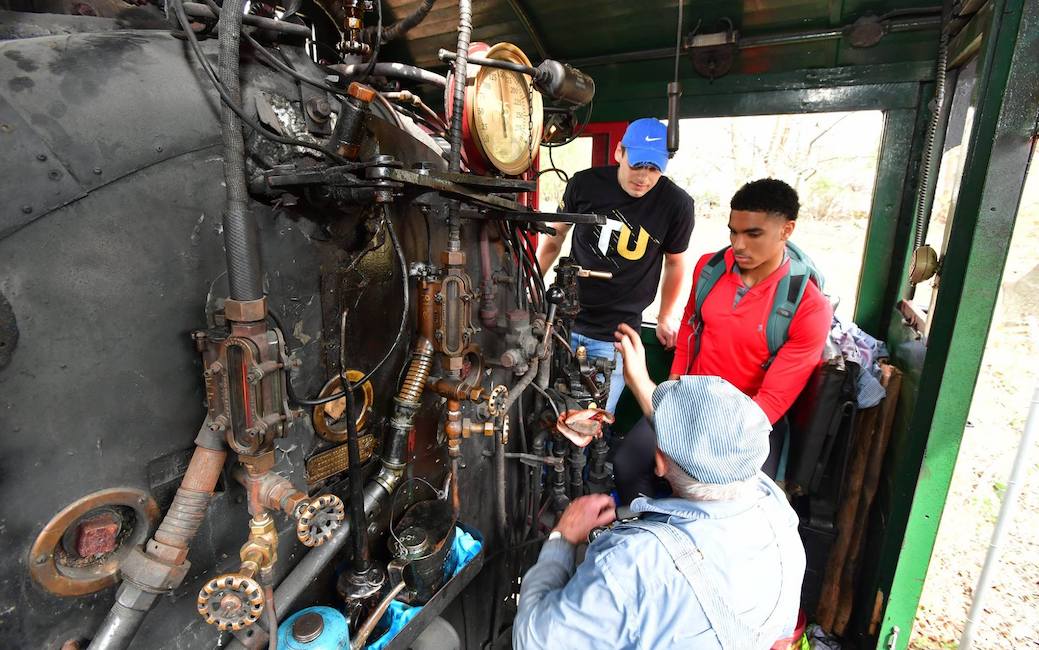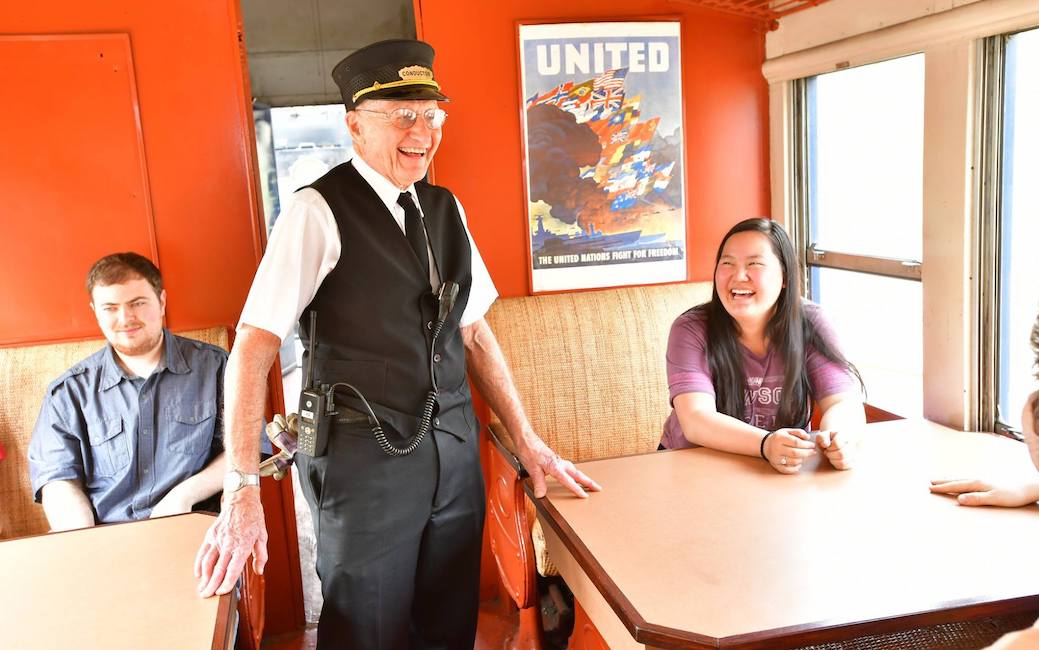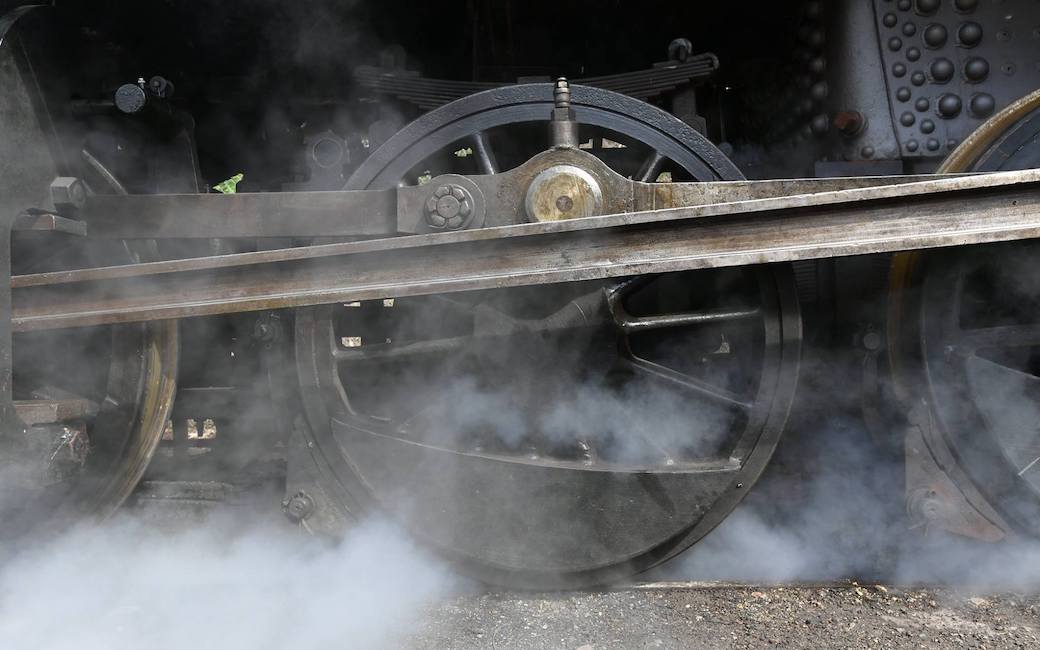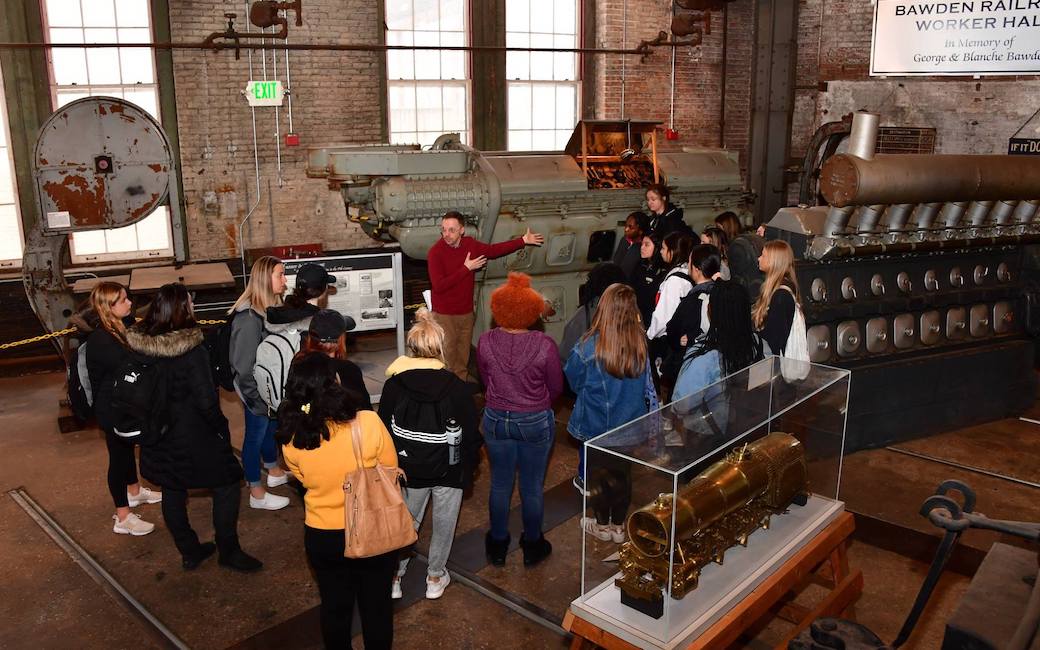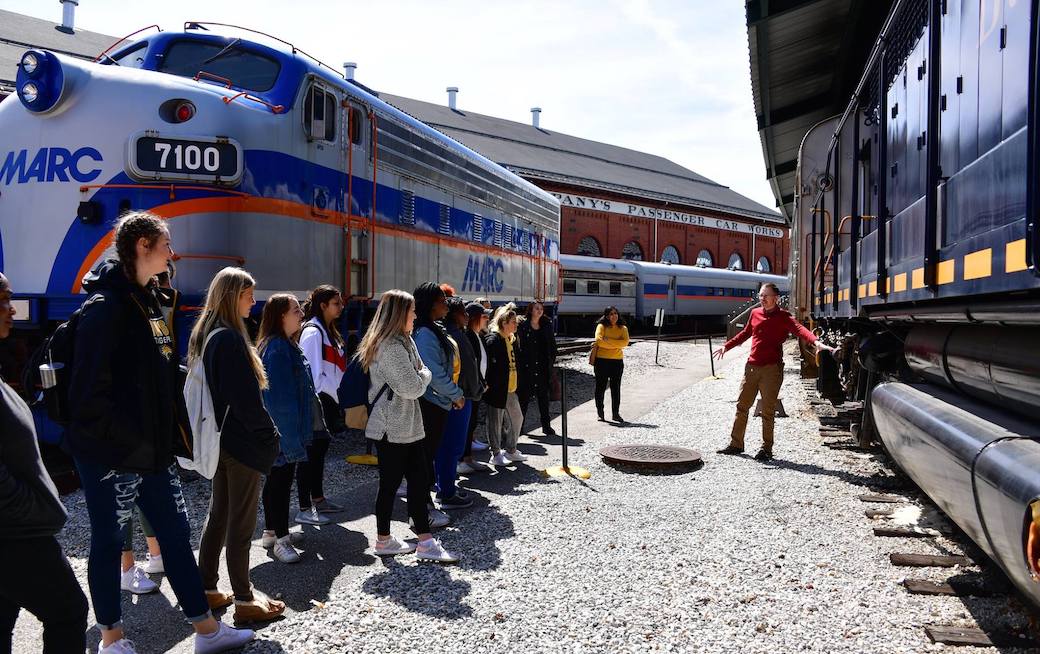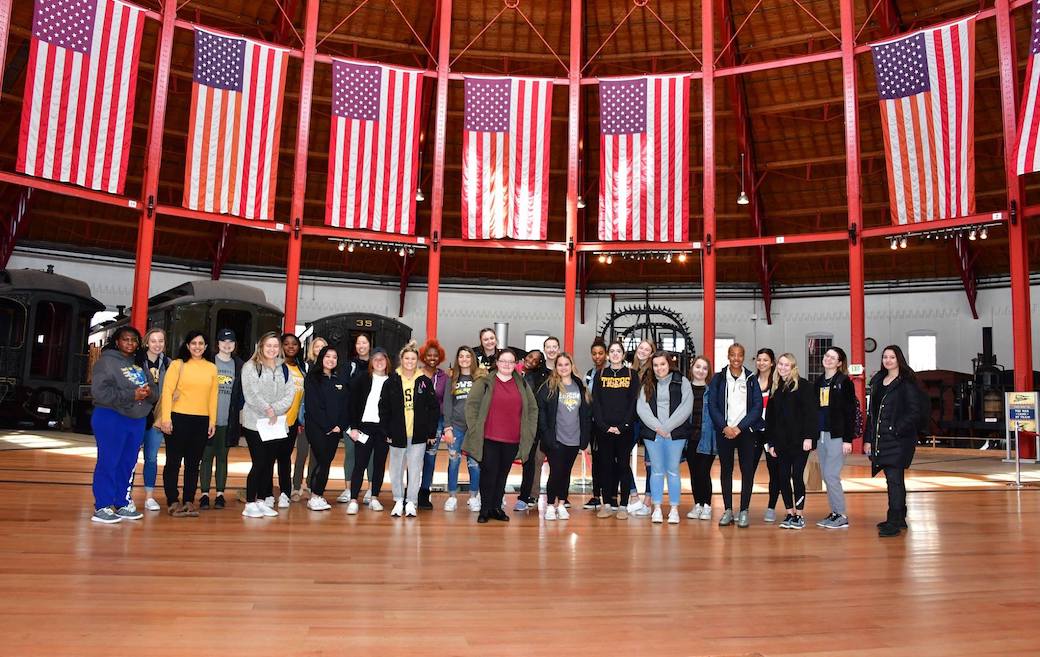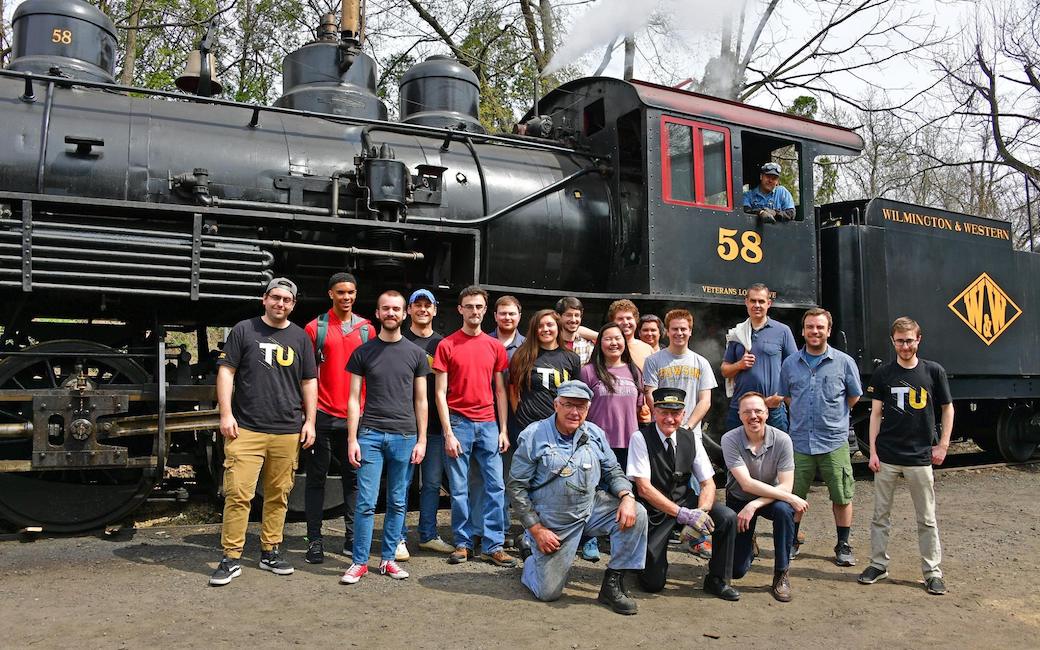
Physics in motion
TU students learn how physics powered the Industrial Revolution
By Henry Basta and Megan Bradshaw on April 28, 2019
Steam trains fell out of favor after World War II as the United States put its considerable scientific and manufacturing know-how into developing cars and airplanes.
But Towson University physics students received a [whistle] blast from the past on April 9, when they visited the Wilmington & Western Railroad Museum as part of James Overduin’s Thermodynamics and Statistical Mechanics class.
“This course is all about the theoretical basis for our modern understanding of energy, heat and matter,” Overduin said. “It’s also about how physics changed the world by discovering a new source of power (steam) that ushered in the Industrial Revolution.”
Students arrived at the museum’s railyard around 10 a.m. and spent over an hour touring the sheds, asking the volunteer railroaders about the physics of steam power, learning how the engine worked and taking turns shoveling coal into the firebox.
The whole morning was an object lesson in the practical results of the theories the students learned in class.
“People learn in different ways,” Overduin notes. “Most of the time I think it’s ‘hands on.’ I definitely had that feeling [at the steam engine] when the students were climbing all over the train and looking at all the parts. When I heard the questions they were asking, I knew they were learning what they had seen on the chalkboard but maybe hadn’t quite grasped.”
The students took an eight-mile round trip ride on a passenger car hooked up to the No. 58 engine, stopping briefly at the Greenbank Station to watch a “run-through,” a chance for students to see the engine’s running gear and compressions in motion.
TU students are strongly encouraged and supported in undertaking experiential learning opportunities through internships, undergraduate research and service learning as well as in-class activities.
From Wilmington & Western to the Baltimore & Ohio
Towson University assistant professor Deepika Menon and her science education students visited the B&O Railroad Museum on March 27 to learn more about the physics topics the elementary education majors cover in Physical Science 101: types of energy, energy transfer, energy transformations and forces-based interactions in the natural world.
The group visited the museum as part of a project where groups of three to four students develop a scenario involving trains and engines, draw energy and force diagrams to illustrate energy transformations and forces involved, and write a report.
“Because I teach future elementary teachers, I refer to them as ‘Next Generation of Science Teachers,’” Menon notes. “My responsibility is not only to help students build a sound conceptual understanding in physical science. but also to enhance their confidence in science teaching for their future teaching careers.
“Teaching topics like energy and force is challenging because they are abstract concepts,” she continues. “Building a strong foundation and excitement toward abstract topics requires students to experience the phenomena in their real lives, not something that is just explained in a lecture. This experience makes science interesting, exciting, memorable and, most important, relevant to them.”
MORE INFORMATION
Studying physics at TU
Physics majors can choose to focus on general physics, applied physics, astrophysics, computational physics or physics secondary education.
- Learn more about the physics major.
- Request information about Towson University.
This story is one of several related to President Kim Schatzel’s priorities for Towson
University: BTU-Partnerships at Work for Greater Baltimore.
